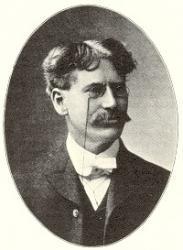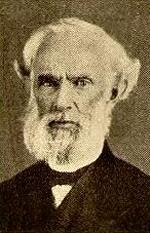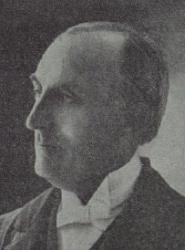Planning worship?
Check out our sister site, ZeteoSearch.org,
for 20+ additional resources related to your search.
- |
User Links
Person Results
‹ Return to hymnal






Export as CSV
Andrew Young
1807 - 1889 Person Name: A. Young Hymnal Number: 87 Author of "There Is a Happy Land" in Glory and Praise Young, Andrew, second son of David Young, for more than fifty years a most efficient teacher in Edinburgh, was born at Edinburgh, April 23, 1807. After passing through a distinguished eight years' literary and theological course at the University of Edinburgh, he was appointed in 1830, by the Town Council, Head Master of Niddry Street School, Edinburgh, where he began with 80 pupils, and left with the total at 600. In 1840 he became Head English Master of Madras College, St. Andrews, where he was equally successful. He retired from St. Andrews in 1853, and lived in Edinburgh, where he was for some time the Superintendent of the Greenside Parish Sabbath School He died Nov. 30, 1889; Many of Mr Young's hymns and poems were contributed to periodicals. A collected edition of these was published in 1876, as The Scottish Highlands and Other Poems. His poems entitle him to rank in the first order of Scottish minor poets. Some of his hymns are very sweet. His "There is a happy land" (q. v.) has attained great popularity. [Rev. James Mearns, M.A.]
--John Julian, Dictionary of Hymnology (1907)
Andrew Young
Fred A. Fillmore

1856 - 1925 Hymnal Number: 88 Composer of "[In the desert of sorrow and sin]" in Glory and Praise Born: May 15, 1856, Paris, Illinois.
Died: November 15, 1925, Terrace Park, Ohio.
Buried: Milford, Ohio.
Frederick Augustus Fillmore, who was born on May 15, 1856, in Paris, IL, one of seven children, five sons and two daughters, born to Augustus Damon and Hannah Lockwood Fillmore. His father was a preacher in the Christian Church, as well as a composer,
songbook compiler, and hymn publisher who developed his own system of musical notation using numbers on the staff in place of note heads. Augustus eventually settled in Cincinnati, OH, and established a music publishing business there. Until 1906, there was no official distinction between "Christian Churches" and "Churches of Christ." The names were used pretty much interchangeably, and many older churches of Christ which are faithful today were once known as "Christian Churches."
Fred and his older brother James took over their father's publishing business following the death of Augustus in 1870 and established the Fillmore Brothers Music House. This became a successful Cincinnati music form, publishing church hymnals and later band and orchestral music. For many years the firm issued a monthly periodical, The Music Messenger. The brothers edited many hymnbooks and produced many songs which became popular. Beginning with the songbook Songs of Glory in 1874, there appeared many Fillmore publications which became widely used through churches, especially in the midwest. For these collections, Fred provided a great deal of hymn tunes.
--launch.groups.yahoo.com/group/hymnoftheday
Fred A. Fillmore
J. B. Herbert

1852 - 1927 Person Name: Dr. J. B. Herbert Hymnal Number: 140 Composer of "[From the rising of the sun, till the setting of the same]" in Glory and Praise
J. B. Herbert
M. E. Thalheimer
Hymnal Number: 137 Author of "Thou Art My Shepherd" in Glory and Praise
M. E. Thalheimer
J. B. Cramer
1771 - 1858 Person Name: J. Cramer Hymnal Number: 137 Composer of "[Thou art my Shepherd]" in Glory and Praise
J. B. Cramer
Love H. Jameson

1811 - 1892 Person Name: L. H. Jameson Hymnal Number: 16 Author of "Angels Bands are Singing Now" in Glory and Praise Born: April 17, 1811, Jefferson County, Indiana.
Died: April 12, 1892, Indianapolis, Indiana.
Buried: Crown Hill Cemetery, Indianapolis, Indiana.
Love Humphreys Jameson was born in Jefferson County in what was then the Territory of Indiana on May 17, 1811, the son of Thomas Jameson. Thomas had moved from Virginia to Kentucky around 1800 and later to the Indiana Territory in 1810 or early 1811. Thomas’s parents were members of the Calvinistic Kirk of Scotland and his wife’s parents held the views of the Church of England, but the family became Christians in 1816 with Love’s father and mother being baptized by John McClung, a young associate of Barton Warren Stone. Love, whose education was attended with all the difficulties associated with frontier life and was mostly under the tuition of his parents, was baptized in the fall of 1829 during a protracted meeting with Beverly Vawter and then preached his first sermon that same year on Dec. 25, following which he began preaching the gospel regularly.
From 1830 to 1834, Jameson taught school during the winters and made preaching trips in the summers. One of his mentors was Walter Scott, with whom he frequently travelled and worked. Moving to southern Ohio, in 1834, he, along with Scott, attended the famous debate of 1837 between Alexander Campbell and Bishop Purcell at Cincinnati, OH. In addition, he wrote frequently for Campbell’s paper, The Millennial Harbinger, in which Campbell spoke of him as the brother “whose praise is in all the churches in Indiana.” After preaching at various churches in Hamilton County, OH, Jameson worked with the church in Dayton from 1835 to 1837, when he married Elizabeth M. Clark. Also, in the closing years of B. W. Stone’s life, Jameson often accompanied the elderly preacher on his journeys. In 1840 he returned to Indiana and located at Madison, IN, the following year. His wife died of an apoplectic stroke suddenly soon afterwards, and he married Elizabeth R. Robinson in 1842, moving to Indianapolis, IN, which became his headquarters for the rest of his life.
In 1845, Jameson was asked, along with John O’Kane, to evangelize in the southwestern part of the state. Then after 1854, he made regular preaching trips into Ohio, Kentucky, Western Missouri, Illinois, New York, and even portions of New England. “There is a Habitation” was penned about 1860, with both words and original music by Jameson, but it never achieved any degree of popularity because of its slow, ponderous, torpid melody. The song as we know it was first published under the title, “O Sion, Sion,” in the New Christian Hymn and Tune Book, Part II, compiled at Cincinnati, OH, in 1882 by James Henry Fillmore. Jameson, who also provided the lyrics for “Night, With Ebon Pinion,” died ten years later, on May 1, 1892, in Indianapolis.
--hymnstudiesblog.wordpress.com
Love H. Jameson
Anna Shepherd
Person Name: Annie Shepherd Hymnal Number: 125 Author of "Around the Throne" in Glory and Praise
Anna Shepherd
Mrs. A. L. Davison

1851 - 1887 Hymnal Number: 10 Author of "Sweet Zion Bells" in Glory and Praise Born: 1851, Cuyahoga Falls, Ohio.
Died: March 10, 1887, Chicago, Illinois.
Buried: Carthage, Missouri.
Fannie’s father was killed when she was 10 years old; after her mother’s remarriage to hotelier Henry Warner, the family moved to Carthage, Missouri. Fannie married court reporter Asa Lee Davison and they moved to Chicago, Illinois, then Madison, Wisconsin. Several of her songs appeared in publications from the Fillmore Brothers of Cincinnati, Ohio, including Songs of Gratitude (1877), Joy and Gladness (1880) and The Voice of Joy (1882).
Lyrics--
Last Words, The
Purer in Heart, O God
--hymntime.com/tch/bio
Mrs. A. L. Davison
Harriet E. Jones

1823 - 1915 Person Name: Mrs. Harriet Jones Hymnal Number: 57 Author of "Sometime" in Glory and Praise Harriet E. Rice Jones, 1823-1915
Born: April 18, 1823, Pompey Hollow, Onondaga County, New York.
Died: 1915, Binghamton, New York.
Buried: Oran Community Church Cemetery, Pompey, Onondaga County, New York.
Daughter of Eleazer Rice, Jones lived in Onondaga County, New York. Her girlhood was spent on a farm, receiving what education the country schools and one term at high school could provide. She was always fond of reading, and was a great singer, with a clear ringing voice. On July 7, 1844, she married a son of Rev. Zenas Jones; her husband died in 1879. Her song writing career began when her poetry came to the attention of Dr. M. J. Munger, who asked if she could write some Sunday school hymns for him. She went on to write for Daniel Towner, J. C. Ewing, the Fillmore brothers, and others.
--hymntime.com/tch
Harriet E. Jones
J. H. Rosecrans

1845 - 1926 Person Name: J. H. R. Hymnal Number: 111 Composer of "[I washed my hands this morning]" in Glory and Praise James Holmes Rosecrans studied at the Baxter University of Music in Friendship, New York. After teaching for two years, he joined the Fillmore Brothers Music House in Cincinnati, Ohio. As of 1880, he was teaching music in Douglas County, Colorado. In 1884, was an evangelist in California, and later was associated with evangelistic efforts in Texas, and taught music and Bible at Carlton College in Bonham, Texas. He published over 20 music collections in his lifetime.
© The Cyber Hymnal™ (www.hymntime.com/tch)
J. H. Rosecrans


 My Starred Hymns
My Starred Hymns


